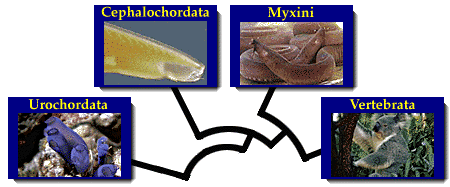 Science
Science
 Biology
Biology
 Taxonomy
Taxonomy
 Phylogenetic trees - Systematics - Cladistics
Contact
Phylogenetic trees - Systematics - Cladistics
Contact
Don's Home
 Science
Science
 Biology
Biology
 Taxonomy
Taxonomy
 Phylogenetic trees - Systematics - Cladistics
Contact
Phylogenetic trees - Systematics - Cladistics
Contact
|
| Taxonomy | Eukarya (more phylums) | Evolution | Phylogenetic Trees |
Under Construction 
The Binomial Nomenclature (Genus, Species) introduced by Swedish Naturalist Carolus Linnaeus (Karl von Linné), the father of modern taxonomy, in the mid-1700's lasted for 200 years. Linnean classification organizes species in a hierarchical scheme based largely on similarities in their forms and other traits that usually, but not always, reflect evolutionary relationships.
However, the Linnean System was done before Darwin and does not reflect evolutionary relationships. Alternative systems, systematics & Cladistics were proposed in the mid-1900-'s. See other Clades at the evolution page.
A phylogenetic tree is a specific type of cladogram where the branch lengths are proportional to the predicted or hypothetical evolutionary time between organisms or sequences. Cladograms cannot be considered completely true and accurate descriptions of the evolutionary history of organisms, because in any cladogram there are a number of possible evolutionary pathways that could produce the pattern of relatedness illustrated in the cladogram. See: Phylogenetic Trees at cnx.org Traditional Taxonomies places Birds in a separate class, Aves, from reptiles based on a derived character that evolved only within a group like feathers. Cladistics uses shared as well as derived characters, so birds are in the Archosauria clade with crocodiles. | |
 Amniota Clad of Living Terrestrial Vertibrates |
Chelonia (Tortoises) Sphenodontidae (tuataras) Squamata (amphisbaenians, lizards, and snakes) Crocodylia (Alligators, Crocodiles) Aves (Birds) |
 Cordate Clade at Univ. of California Museum of Paleontology (UCMP)
The origin of the eukaryotic cell was a milestone in the evolution of life. Although eukaryotes use the same genetic code and metabolic processes as prokaryotes, eukaryotes' higher levels of organizational complexity has permitted the development of truly multicellular organisms. The roots of the eukaryotic cell are still being defined. According to the Tree of Life Web project, 1997 . "There are two alternative views on the relationship of the major lineages (omitting viruses) shown below:
The "archaea tree":
,=============== Eubacteria (Bacteria) [Domain]
|
| ,== Euryarchaeota [Kingdom]
===| ,=Archaea [Domain]=|
`==| `== Crenarchaeota-Eocytes [Kingdom]
|
`============ Eukaryotes [Domain] (Plants, Animals, Fungi and Protists [Protozoa, most algae] )
The "eocyte tree":
,======== Eubacteria
|
| ,===== Euryarchaeota
=====| |
`==| ,== Crenarchaeota-Eocytes
`==|
`== Eukaryotes
See Also: Introduction to Studying Eukaryotic Origins at UCLA
Great Ape (hominoids) Classification
"Evolutionary Classification" :
Superfamily Hominoidea (humans and the apes)
.....Family Hylobatidae
..........Genus Hylobates (gibbon)
.....Family Pongidae ("higher apes")
..........Genus Pongo (orangutan)
..........Genus Gorilla (gorilla)
..........Genus Pan (chimpanzees-two species; common chimp and pygmy chimp (= bonobo)
.....Family Hominidae
..........Genus Homo (humans)
"Cladistic Classification:"
Superfamily Hominoidea
.....Family Hylobatidae
...............Genus Hylobates (gibbon)
.....Family Hominidae
..........Subfamily Ponginae
...............Genus Pongo (orangutan)
..........Subfamily Homininae
...............Genus Gorilla (gorilla)
...............Genus Homo (two species of chimp and humans)
Source: Humans, Apes, Classifications, And Macroevolution at Oklahoma State
See Tree of Life Diagrams at the evolution page. DNA analysis: 5.4 +/- 1.1 million years ago (36 nuclear genes) for the human-chimpanzee divergence. 6.4 +/- 1.5 million years ago (gorilla, 31 genes) 11.3 +/- 1.3 million years ago (orangutan, 33 genes) 14.9 +/- 2.0 million years ago (gibbon, 27 genes) (Stauffer et al, 2001). Source: ecotao.com/holism/add/Hominoidea.html See: An Introduction to Cladistics and Systematics at UCMP - Univ. of California Museum of Paleontology. John Kimball's Cladistics Cladistics Examples at Texas A&M Attacks on Taxonomy at AmericanScientist.org PhyloCode and human evolution by John Hawks Return to _CATEGORY
| |